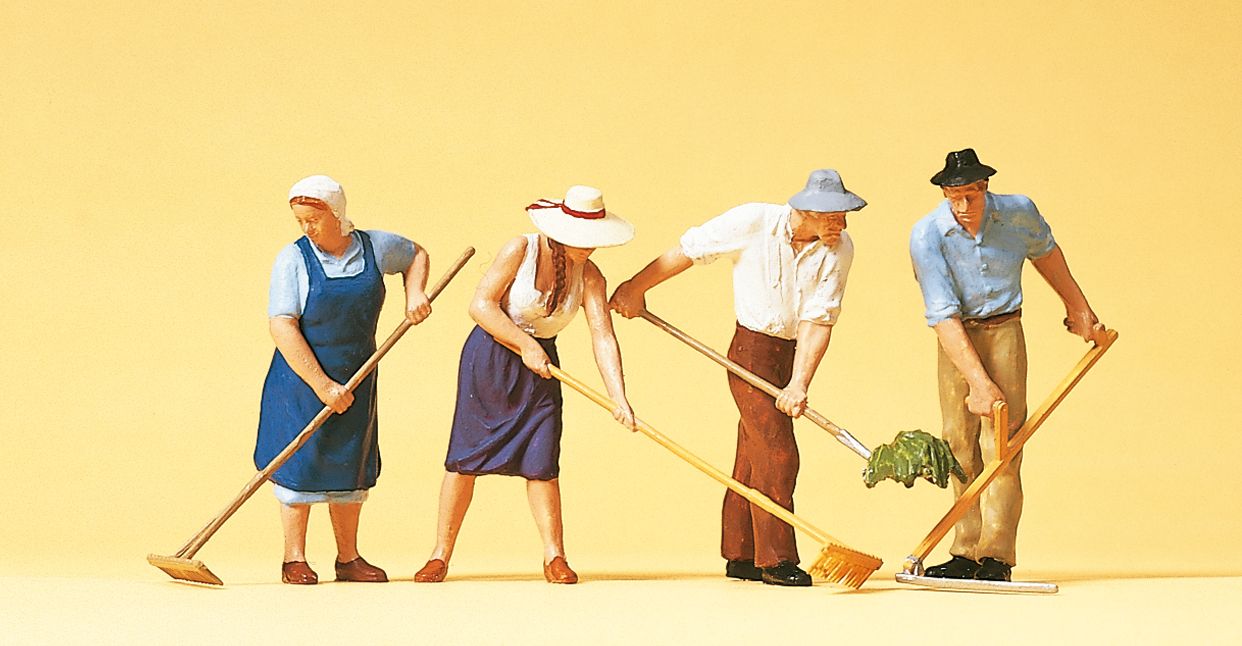
Figurines for model trains, showing women and men working in tradtional clothing

The model train world does not only contain of locomotives, wagons and tracks. It is only complete with an additional set of figurines, miniature buildings and a lot of imagination (elliott, 1995, p. 14). Brands provide various opportunities to build your own little world, but all show one thing: The audience is male dominated (elliott, 1995, p.14; Stonies, 2016, p.198). Elliott (1995) describes the product range of figurines in the 1990s: “I’ve discovered a very clear, although, of course, very small, version of what kind of world these “guys” fantasize about” (p.14). The catalogues and stores sell rigid gender roles with a design stuck in the 1950 (elliott, 1995, p.14). While male figurines wear suits and ties, women are dressed in pleated skirts or housedresses, “stupid looking” hats and high heels (elliott, 1995, p.14). The only nude ones are women, called “swimmers”, and build the only all-female sets available (except for kids-sets) (elliott, 1995, p.14).
Next to a very hetero-stereotypical landscape, race also plays its role in this world: The majority of male figurines are white, the few figurines that aren’t white are Japanese tourist with cameras and a few black men as railroad labourers (elliott, 1995, p.14). elliott (1995) comments, these catalogues are a white man’s dream “where everyone who matters is a white man, and the Others are clearly marked by their dress.” (elliott, 1995, p.15).
This paper is a very objective insight into the catalogues and could be seen as outdated. However, looking into the market today doesn’t show a completely different picture. The figurines are still mostly light-skinned, there are barely any other races represented in a clear way (most of the figurines don’t have faces or other details shown). But they wear more modern clothing and women are shown in context of work situations (carrying briefcases) nowadays.